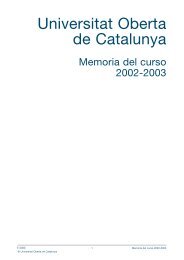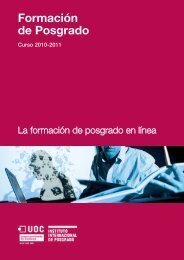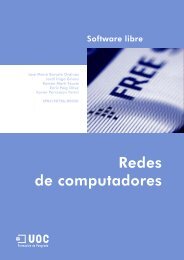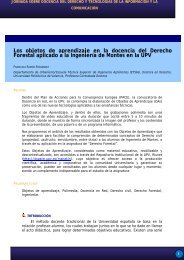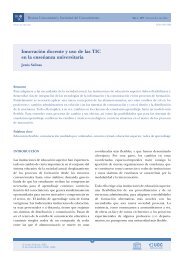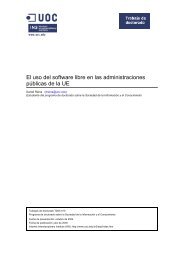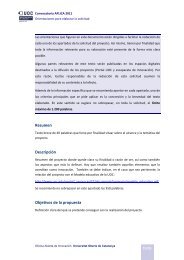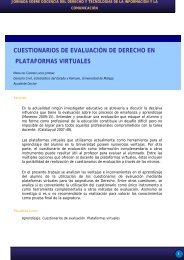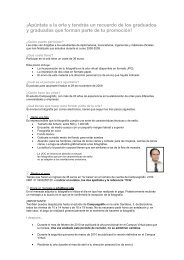e-governance and citizen information - Universitat Oberta de ...
e-governance and citizen information - Universitat Oberta de ...
e-governance and citizen information - Universitat Oberta de ...
Create successful ePaper yourself
Turn your PDF publications into a flip-book with our unique Google optimized e-Paper software.
E-<strong>governance</strong> <strong>and</strong> Citizen Information 32 Theoretical Framework. The Network Administration2.3. Managing InnovationA look at the aforesaid literature leads us to consi<strong>de</strong>r which elements should be observedto analyse the technological innovation processes in the Public Administration. The magnitu<strong>de</strong>of the organisational changes that must occur or that are taking place with electronicgovernment <strong>and</strong> the consequences of these transformations to the traditional Weberian bureaucracymo<strong>de</strong>l are yet to produce clear results. In this sense, a study on the cultural barriersof electronic government, Margetts <strong>and</strong> Dunleavy (2002), states that the first difficultyis the negative experience of many administrations in the projects <strong>de</strong>aling with change relatedto ICTs. In fact, the areas for technological innovation surrounding ICTs have been aterrain populated by failures, large expectations <strong>and</strong> not many real benefits. In addition wecould perhaps add civil servants' huge <strong>de</strong>gree of distrust in major administrative reformprojects – due to both an excess <strong>and</strong> a lack of political lea<strong>de</strong>rship (Gil <strong>and</strong> Casamayor,2003).From a wi<strong>de</strong>r perspective, Fountain (2001) suggests that the challenge for a government isnot to put services online, but rather to reorganise <strong>and</strong> restructure the institutional processeson which they are supported. For this author, the Internet – as a new communications, coordination<strong>and</strong> control infrastructure – could bring about major structural changes: in budget<strong>and</strong> supervision processes, <strong>and</strong> the structure of committees, linked to the growth of inter<strong>de</strong>partmental<strong>and</strong> inter-administrative networks. However, against the i<strong>de</strong>a that “the Internetwill change everything”, she also states that the Internet is often used to strengthen the oldinstitutional structures rather than to exp<strong>and</strong> the scope of communications.In any case, among the basic issues raised in recent years we can highlight the need toovercome administrative compartmentalisation, the rigidity caused by hierarchy or the effectsof the lack of efficiency criteria. We should consi<strong>de</strong>r the interaction between the organisationalstructure, actors <strong>and</strong> technological innovation processes to help us un<strong>de</strong>rst<strong>and</strong>how these processes occur <strong>and</strong> what their characteristics are. And finally, we could supportthe construction of our analytical mo<strong>de</strong>l for this research project.2.3.1. Administrative CompartmentalisationThe literature on this subject states that the institutional <strong>de</strong>sign of public bureaucracy oftenhampers the <strong>de</strong>velopment of inter<strong>de</strong>partmental processes <strong>and</strong> initiatives (Hudson, 1999). Infact, collaboration between <strong>de</strong>partments within the same administration, which is vital in electronicgovernment, is usually where the har<strong>de</strong>st obstacles are i<strong>de</strong>ntified. Some of the drawbackswould be the fragmentation of the Administration – not only in government units but alsohttp://www.uoc.edu/in3/pic




